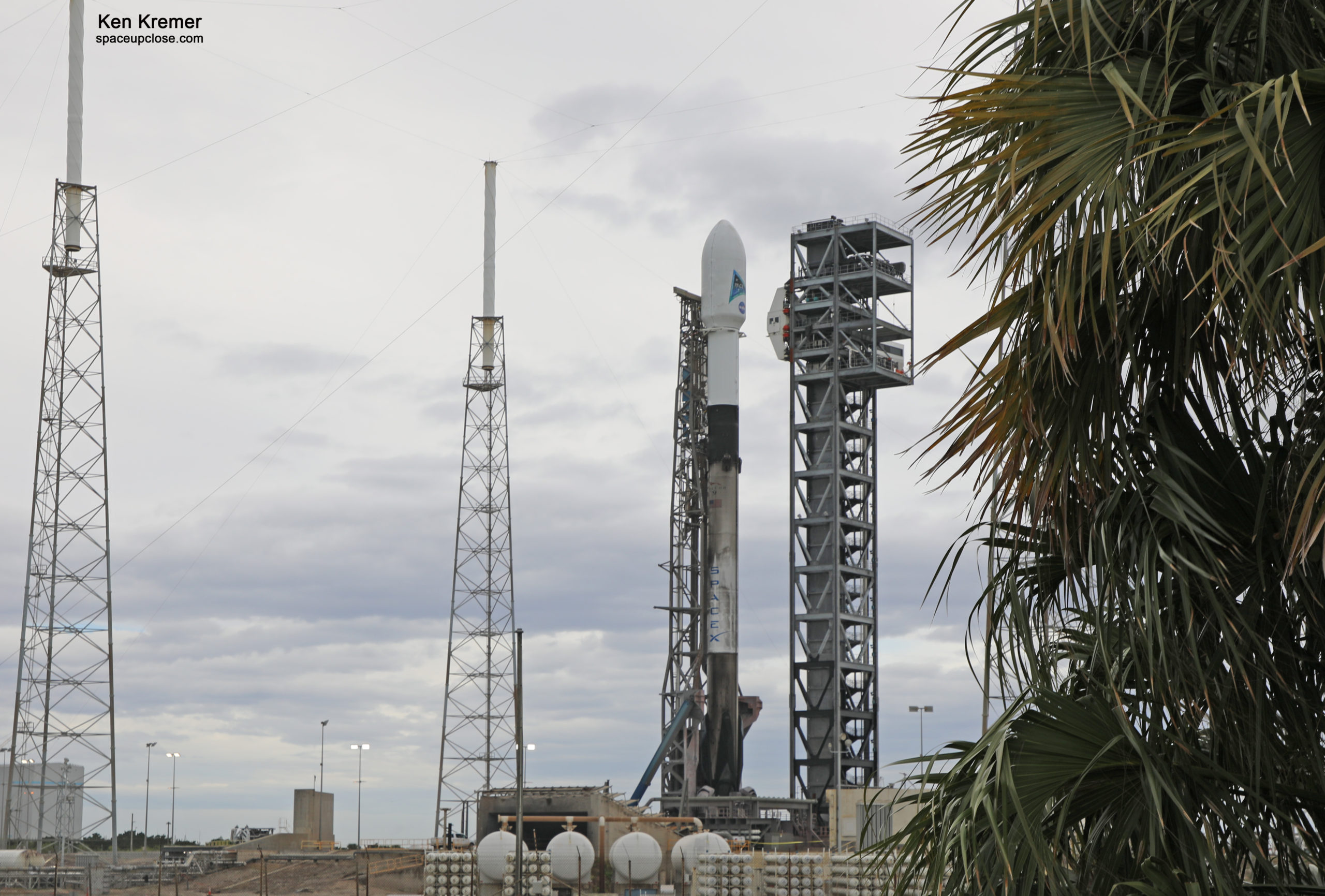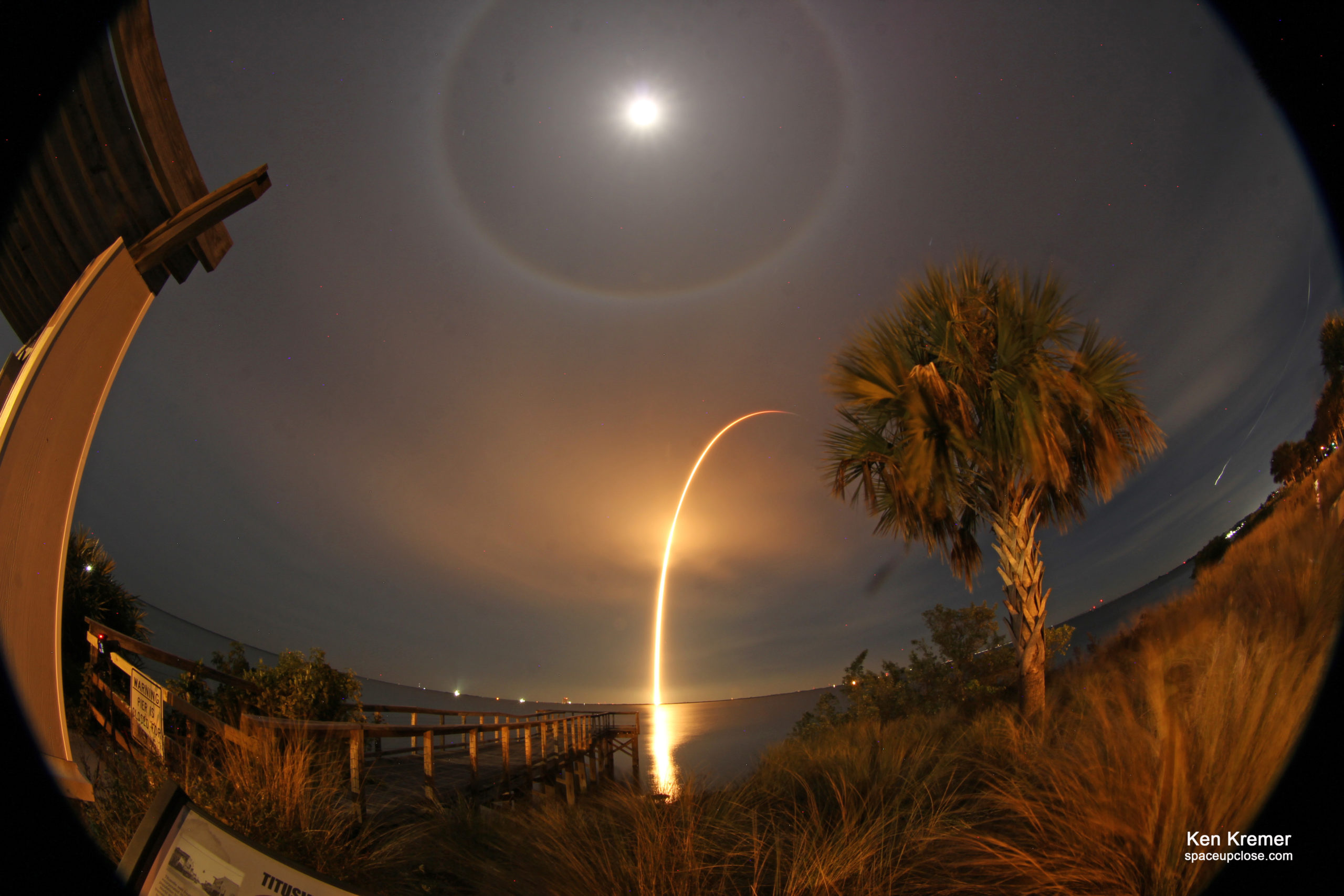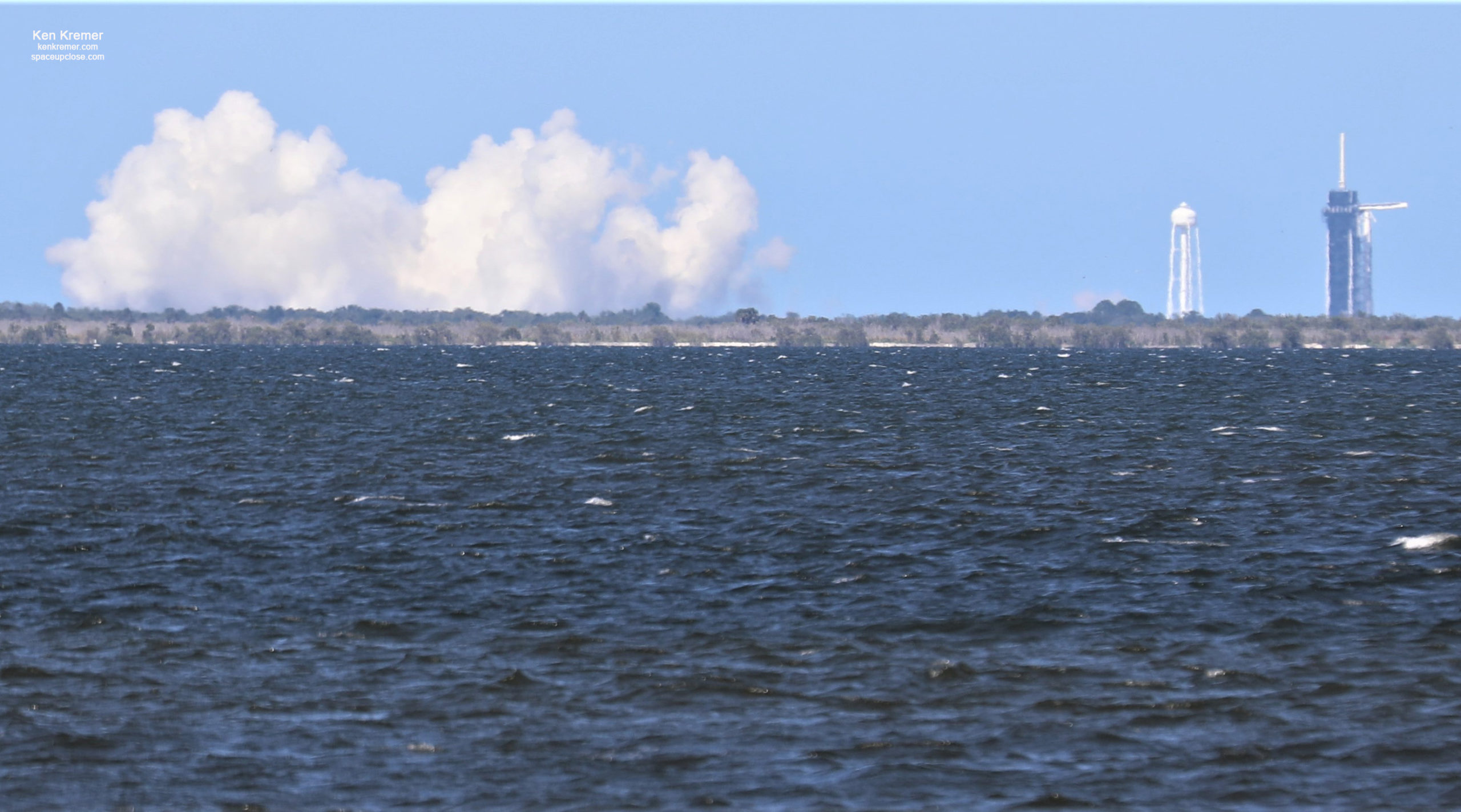
For SpaceUpClose.com & RocketSTEM
CAPE CANAVERAL, FL – Following a two day long Flight Readiness Review and a successful test firing of the critical 1st stage engines later this afternoon, the NASA and SpaceX teams gave the GO for launch of the first commercial SpaceX Falcon 9 rocket and integrated Crew Dragon spacecraft that will launch humans to space on its historic 1st astronaut mission slated for next week Wednesday, May 27 from the Florida Space Coast to the International Space Station (ISS) – as part of the agency’s Commercial Crew Program.
No human has launched from American soil in nearly 9 ultra-long years – since the retirement of the space shuttle and its final launch on July 8, 2011 on the STS-135 mission to the ISS.
“The Flight Readiness Review is complete; we have another milestone under our belts,” NASA Administrator Jim Bridenstine said in a briefing after the Flight Readiness review concluded today.
“I think everybody in the room was very clear that now is the time to speak up if there are any challenges. And there were some conversations that were very important to be had. But it’s also true that at the end, as each system and subsystem was considered, we got to a ‘go.’ So we are now preparing for a launch in five short days.”
SpaceX engineers conducted a successful static fire test Friday afternoon, May 22, of the Falcon 9 first stage rocket slated for the critical 1st piloted mission of the SpaceX Crew Dragon on the Demo-2 mission for NASA at Launch Complex-39A to prepare for the truly history making launch from NASA’s Kennedy Space Center in Florida – now confirmed for 5 days from today.
The hold down engine test with the erected 21-story-tall Falcon 9 rocket topped by Crew Dragon involved the brief ignition of all nine Merlin 1D first stage engines for several seconds generating some 1.7 million pounds of thrust at pad 39A while the two stage rocket was restrained on the pad with hydraulic hold down clamps – and everything appeared to go well.
Liftoff of the SpaceX Falcon 9 rocket with veteran NASA astronauts Bob Behnken and Doug Hurley on the Demo-2 test flight from historic Launch Complex 39A from NASA’s Kennedy Space Center in Florida is slated for May 27 at 4:33 p.m. EDT (933 GMT) for an extended mission.
The static test fire of the rocket took place as planned Friday, May 22 at 4:33 p.m. ET (2033 GMT) to coincide with the actual planned launch time next Wednesday, May 27.
The hold down static fire test is routinely carried by SpaceX to ensure all systems are ready with the rocket and serves also as a practice wet dress countdown – taking on even vastly more significance considering the precious cargo of 2 humans.
I watched the Friday afternoon engine test from nearby in Titusville, Fl from about a dozen miles away across the Indian River lagoon and observed the exhaust plume and vapor cloud emanating from the bottom of the booster.
Enjoy my eyewitness photos of the static fire test for Space UpClose under beautiful weather conditions with mostly sunny skies and minimal haze.
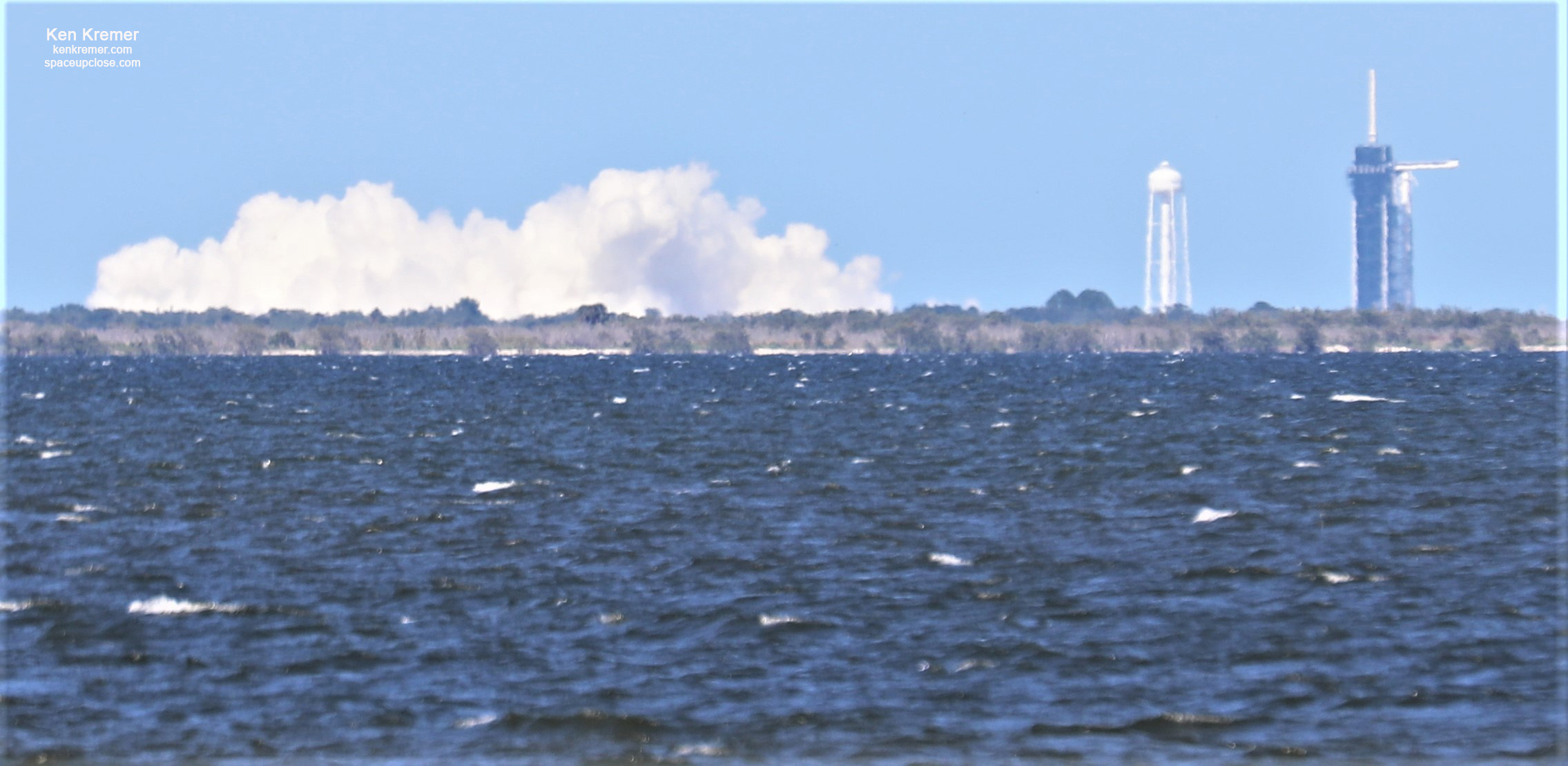
The exhaust was easily visible and wafting overhead and dissipating quickly in the winds within about a minute from about 12 miles away.
SpaceX confirmed a good test result by tweet about two hours later and giving the test data an extra thorough carefully scrutinized review.
“Static fire of Falcon 9 complete – targeting Wednesday, May 27 at 4:33 p.m. EDT for Crew Dragon’s launch to the @Space_Station with @AstroBehnken and @Astro_Doug on board,” SpaceX tweeted.
Static fire of Falcon 9 complete – targeting Wednesday, May 27 at 4:33 p.m. EDT for Crew Dragon’s launch to the @Space_Station with @AstroBehnken and @Astro_Doug on board → https://t.co/bJFjLCzWdK pic.twitter.com/bhcTq4jxAr
— SpaceX (@SpaceX) May 22, 2020
During the engine test all nine Merlin 1D first stage engines are briefly ignited for seven seconds in duration.
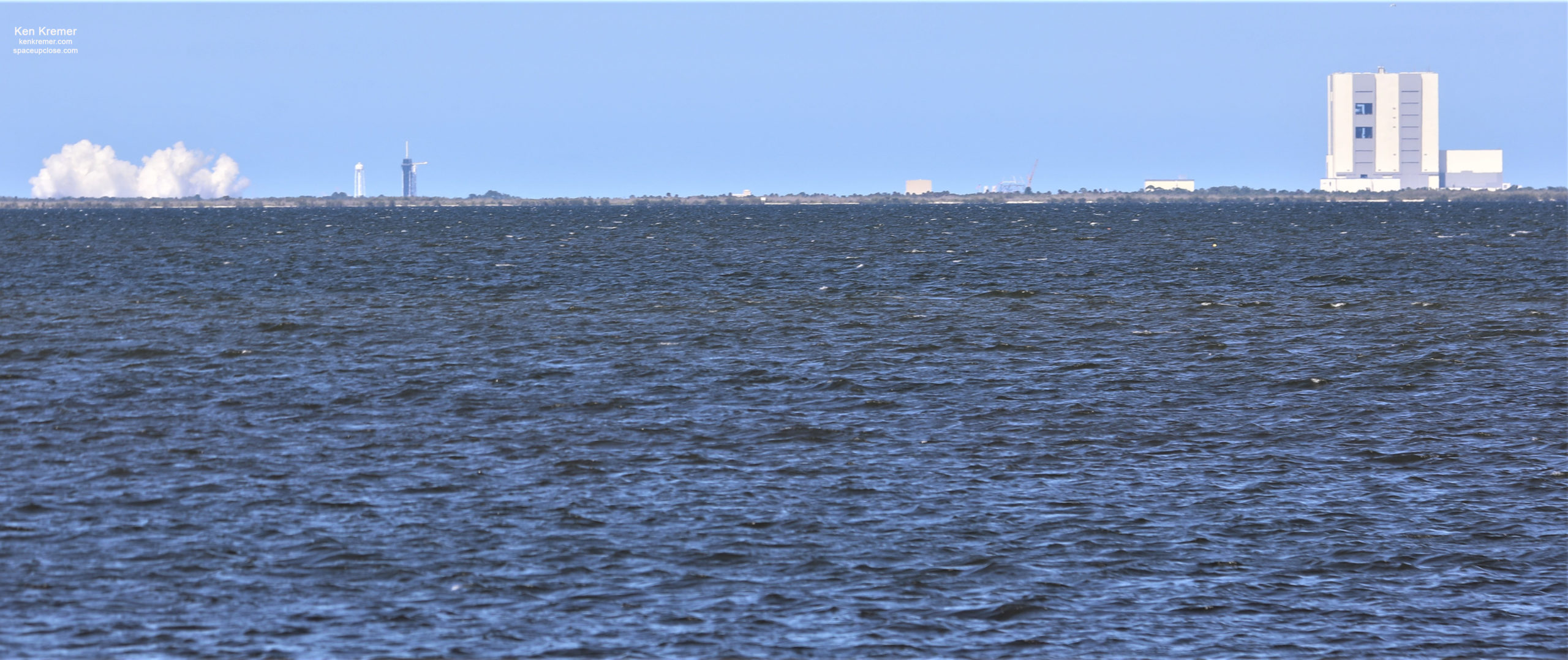
During Friday’s hold down static fire test, the rocket’s first and second stages are fueled with liquid oxygen and RP-1 propellants just like an actual launch, and a simulated countdown was carried out to the point of a brief engine ignition lasting around 3 seconds or so.
The static test fire came shortly after NASA and SpaceX completed a 2-day Flight Readiness Review on Wednesday and Thursday.
“The Flight Readiness Review for the launch of Crew Dragon to the @Space_Station has concluded, and @NASA and @SpaceX are GO to proceed with launch on May 27!” NASA tweeted.
The Flight Readiness Review for the launch of Crew Dragon to the @Space_Station has concluded, and @NASA and @SpaceX are GO to proceed with launch on May 27! https://t.co/kXGDIGQ21V
Tune in for two live events this afternoon ⬇️ pic.twitter.com/eqNgacnN5D
— NASA's Kennedy Space Center (@NASAKennedy) May 22, 2020
“I knew going in that the team was ready, and they absolutely demonstrated that during the review,” said NASA Associate Administrator Steve Jurczyk, at the post review briefing.
“There are no significant open issues, I am happy to report. There’s just the planned forward work to get done.”
The weather outlook for next Wednesday’s launch is rather iffy at the moment with possible thunderstorms in the KSC area.
Big crowds are expected despite NASA asking the public to stay at home during the ongoing coronavirus COVID-19 pandemic crisis.
In case of any delays for weather or technical reasons the next launch opportunity is 3 days later on Saturday, May 30 at 3:22 p.m. EDT (1922 GMT).
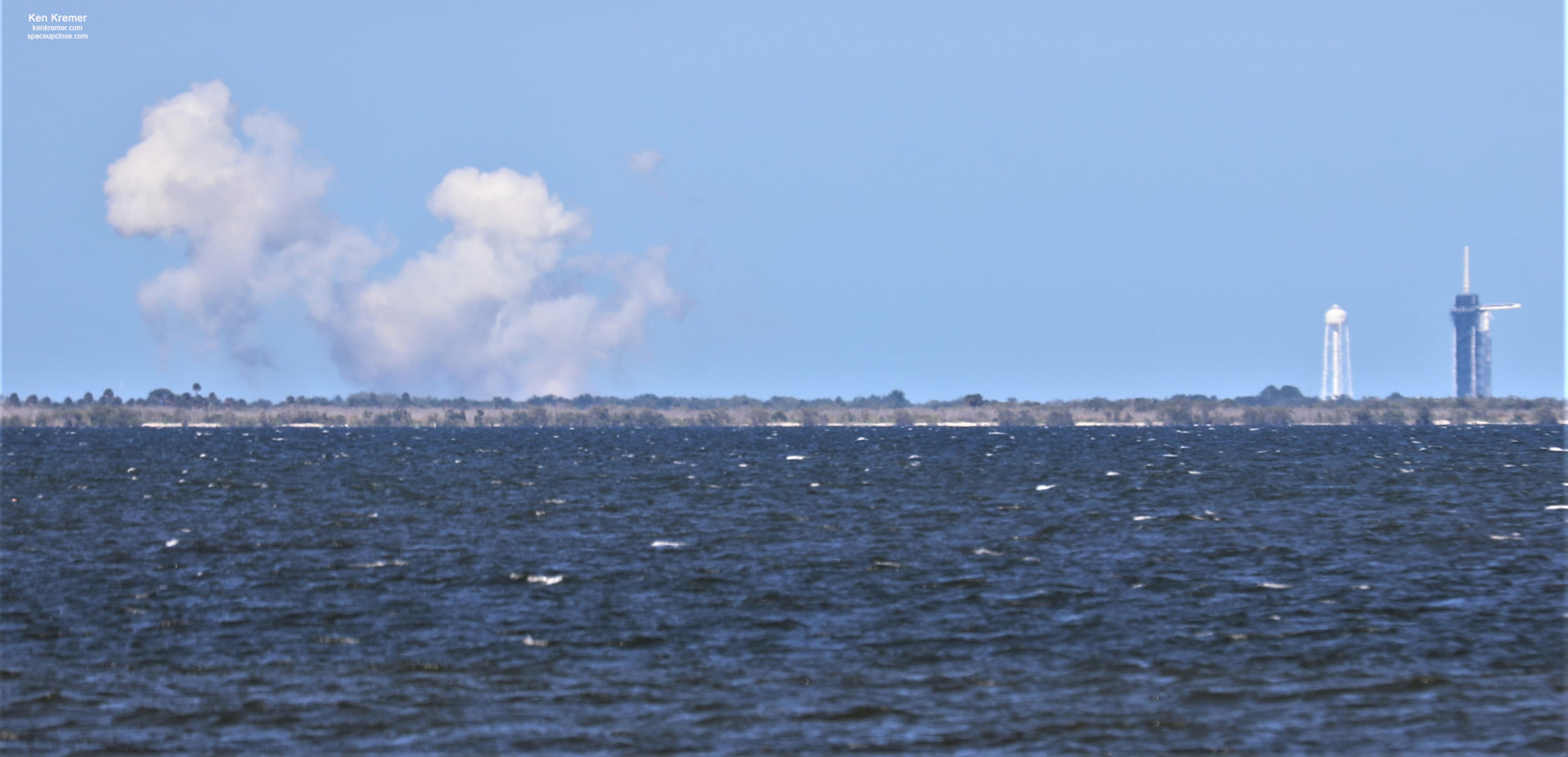
Just 2 days ago the pair of veteran NASA astronauts – Doug Hurley and Bob Behnken – who will ride to space on the Demo-2 mission flew to the Florida Space Coast and arrived Wednesday afternoon May 20 at NASA’s Kennedy Space Center (KSC) to start the final preparations for the history making 1st launch of American astronauts in nine years atop a SpaceX Falcon 9 rocket since the retirement of NASA’s space shuttles in 2011.
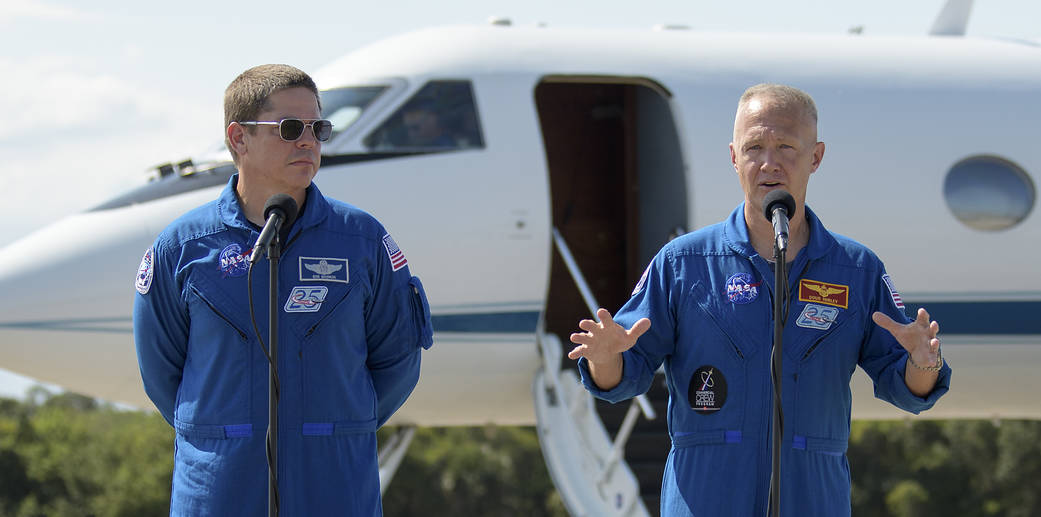
SpaceX Crew Dragon Demo-2 mission piloted by Hurley and Behnken will at last restore U.S. human spaceflight capabilities after a nearly decade long drought.
The next big activity is on Saturday, May 23, when Hurley and Behnken will drive out to pad 39A in the specially designed Tesla Model X and strap into the Crew Dragon spacecraft for a dry dress rehearsal and countdown practice up to the point of fueling of the Falcon 9 rocket.
Here’s my view of the Crew Dragon used in the In Flight Abort (IFA) Test in Jan 2020.
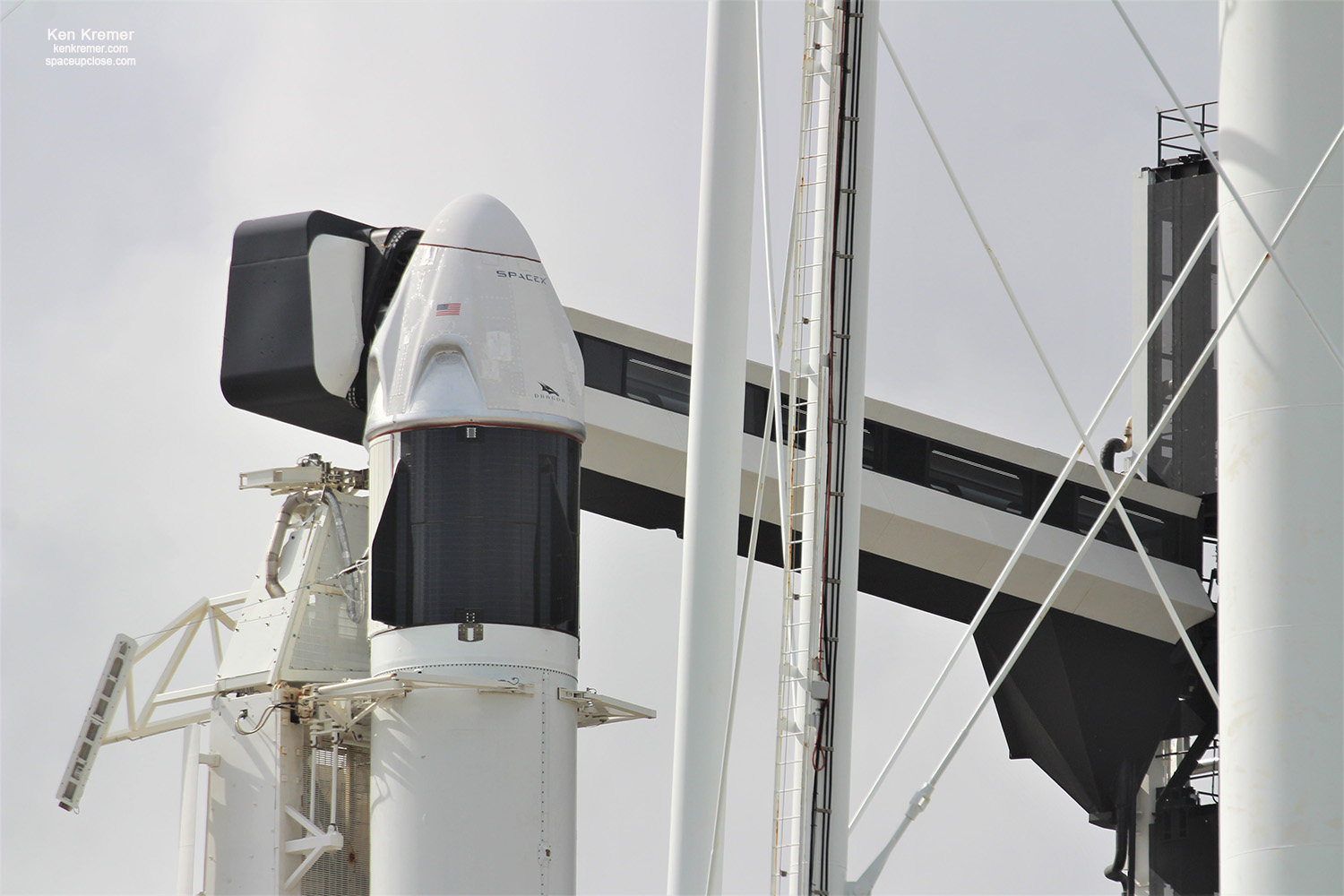
“Demo-2 will be SpaceX’s final test flight to validate its crew transportation system, including the Crew Dragon, Falcon 9, launch pad and operations capabilities. During the mission, the crew and SpaceX mission controllers will verify the performance of the spacecraft’s environmental control system, displays and control system, maneuvering thrusters, autonomous docking capability, and more.”
“The length of the Demo-2 mission will be determined after Behnken and Hurley arrive at the station, depending on the readiness of the next commercial crew launch.”
Watch Ken’s continuing reports about Commercial Crew and Artemis and onsite for live reporting of upcoming and recent SpaceX and ULA launches including Demo-2, Starlink, X-37B, Solar Orbiter, Mars 2020 and more at the Kennedy Space Center and Cape Canaveral Air Force Station.
Stay tuned here for Ken’s continuing Earth and Planetary science and human spaceflight news: www.kenkremer.com –www.spaceupclose.com – twitter @ken_kremer – email: ken at kenkremer.com
Dr. Kremer is a research scientist and journalist based in the KSC area, active in outreach and interviewed regularly on TV and radio about space topics.
………….
Ken’s photos are for sale and he is available for lectures and outreach events
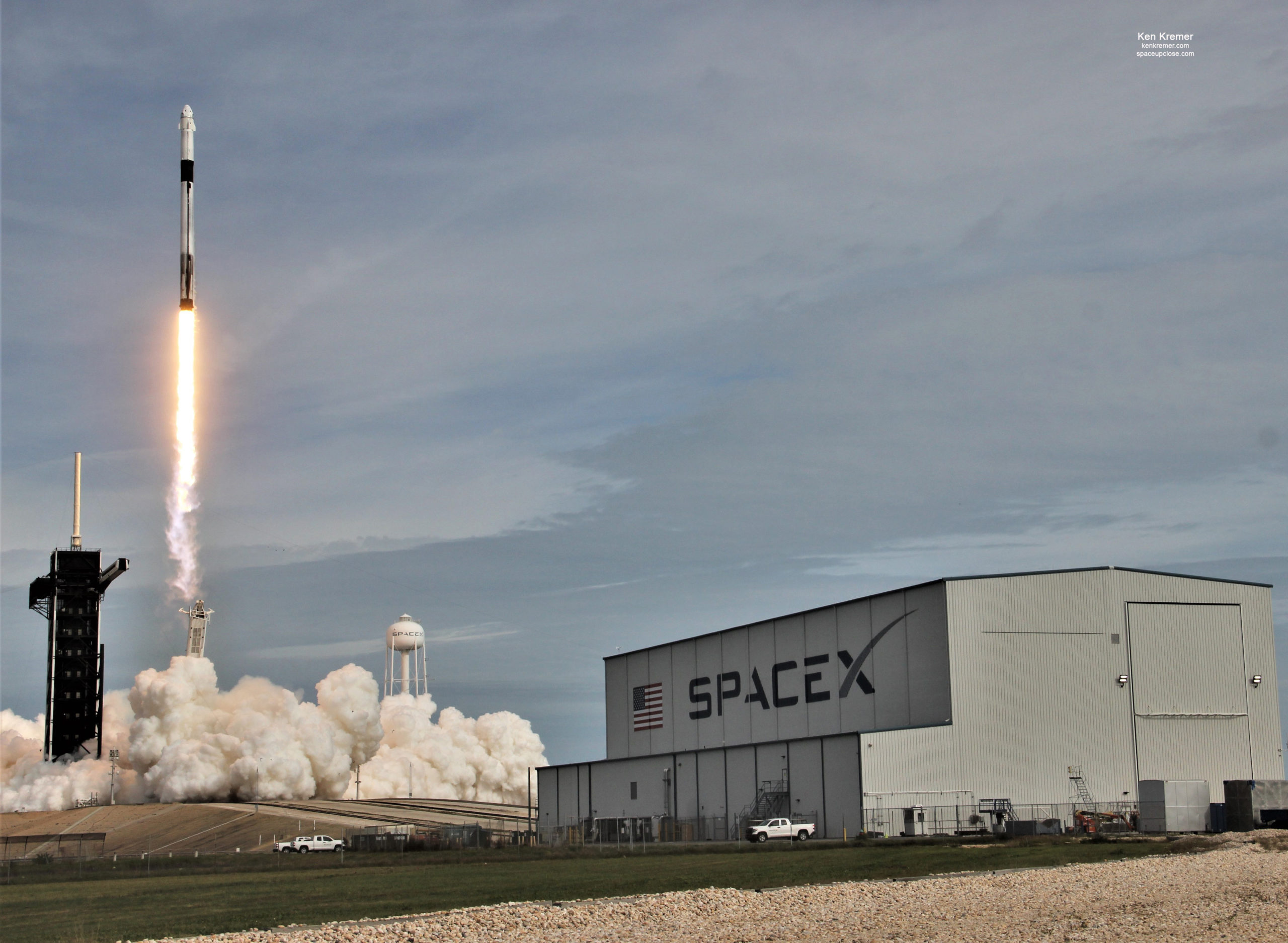
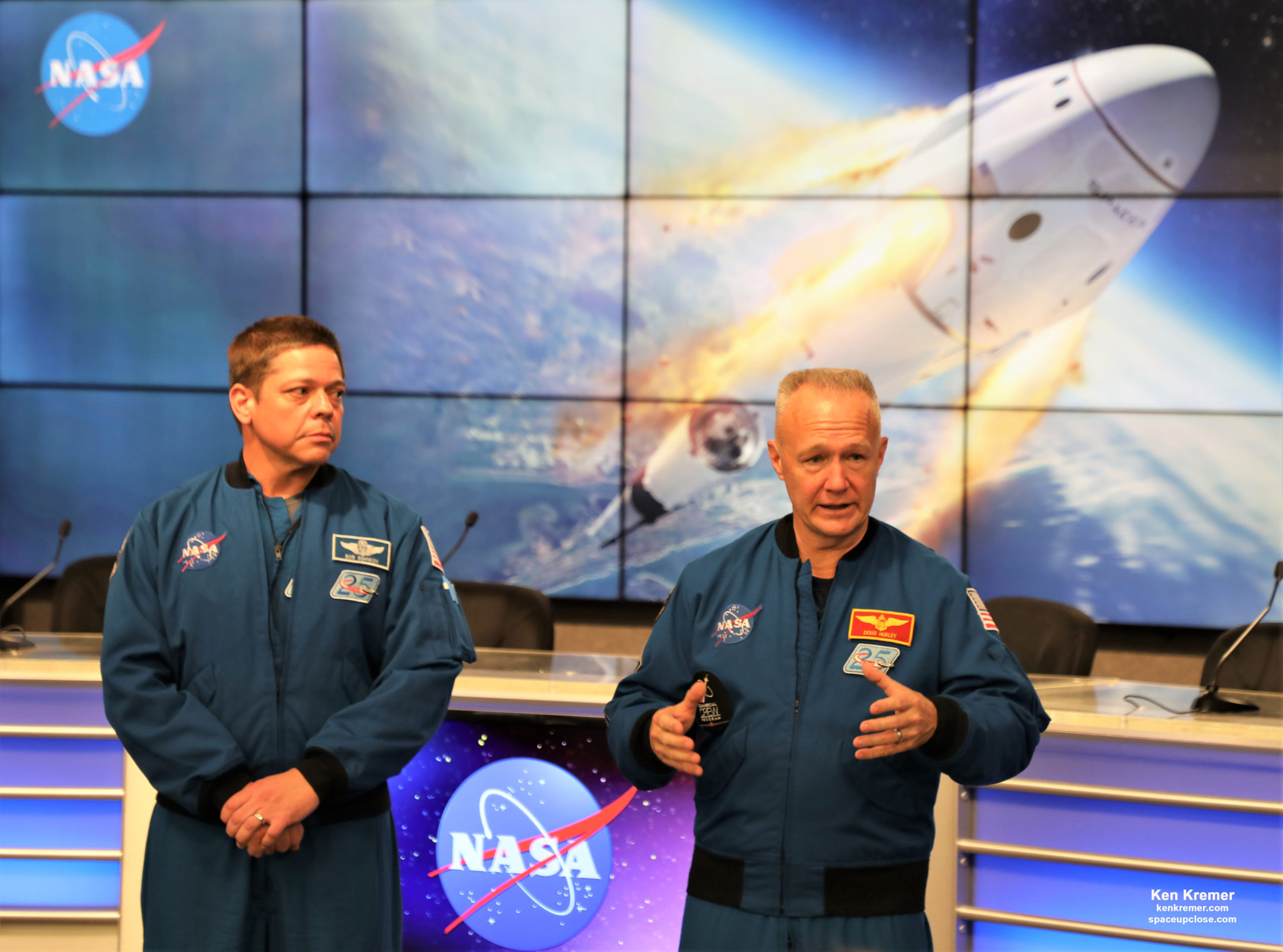
x


